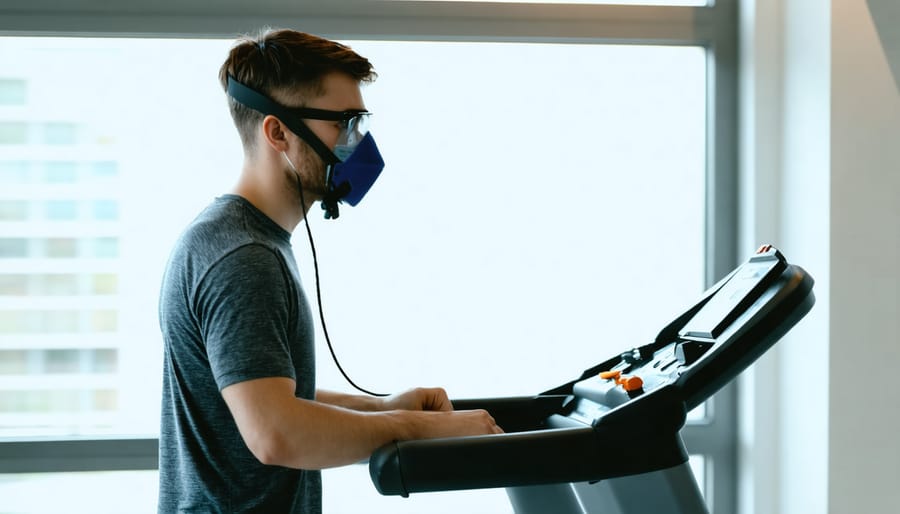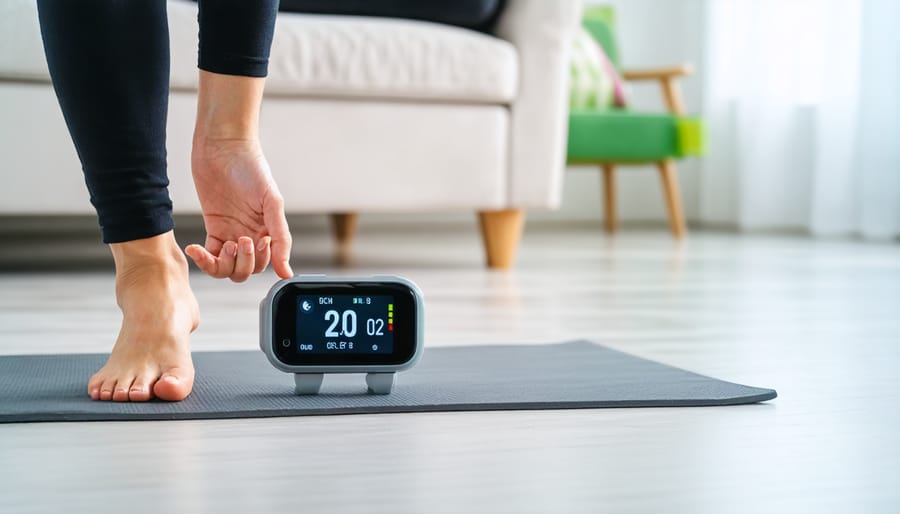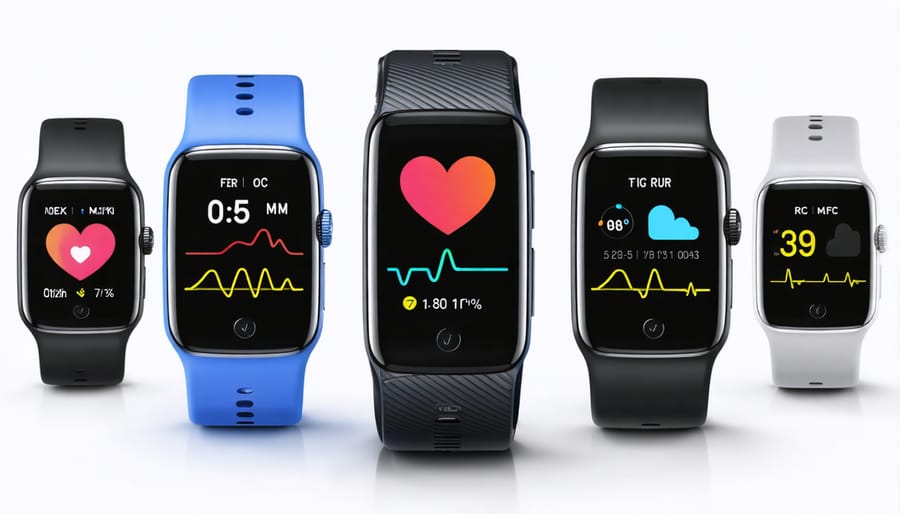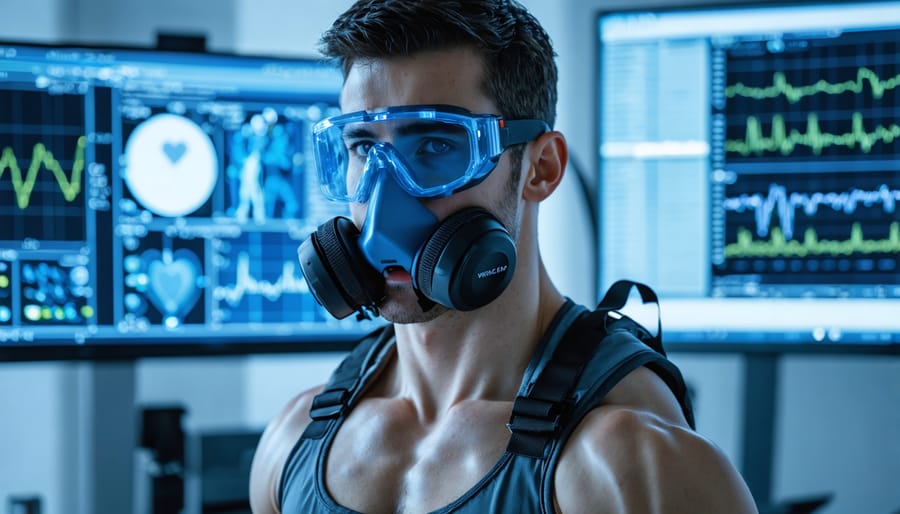Measure your cardiovascular fitness accurately with clinically-proven methods that align with modern heart-healthy habits. Start with the gold-standard VO2 max test, which precisely calculates oxygen consumption during intense exercise. Track resting heart rate first thing each morning, aiming for 60-100 beats per minute, to establish your baseline cardiovascular health. Monitor heart rate recovery by measuring how quickly your pulse returns to normal after physical activity – a faster recovery indicates better fitness. Advanced wearable devices now offer continuous cardiovascular monitoring, providing real-time data about heart rate variability, exercise intensity, and recovery metrics. Understanding these measurements helps create targeted fitness programs, prevent overtraining, and optimize heart health improvement strategies. Whether you’re an athlete fine-tuning performance or beginning your fitness journey, these evidence-based measurements provide clear benchmarks for progress and health status.
Common Cardiovascular Fitness Tests
VO2 Max Testing
VO2 max testing is considered the gold standard for measuring cardiovascular fitness. This test measures the maximum amount of oxygen your body can use during intense exercise, providing a clear picture of your aerobic capacity. During the test, you’ll wear a mask while exercising on a treadmill or stationary bike, with the intensity gradually increasing until you reach your maximum effort.
The results are typically expressed in milliliters of oxygen per kilogram of body weight per minute (ml/kg/min). A higher VO2 max indicates better cardiovascular fitness, with elite athletes often showing values above 60 ml/kg/min. For the average Canadian adult, values typically range between 30-40 ml/kg/min, varying by age and gender.
While traditionally performed in sports science labs or medical facilities, some modern fitness centers now offer VO2 max testing. The results can help create targeted training programs and track improvements in your cardiovascular fitness over time. Your healthcare provider might recommend this test if you’re starting a new exercise program or monitoring a heart condition.
Remember that while VO2 max testing provides valuable information, it’s just one component of overall fitness assessment.

Resting Heart Rate
Your resting heart rate (RHR) is one of the most accessible and reliable indicators of cardiovascular fitness. Measured first thing in the morning or after several minutes of complete rest, a lower RHR typically suggests better cardiovascular health. The average adult’s resting heart rate falls between 60-100 beats per minute, with physically fit individuals often having rates below 60.
Several factors can influence your RHR, including stress levels, hydration, and quality sleep. Regular cardiovascular exercise gradually strengthens your heart, allowing it to pump more blood with each beat, which leads to a lower RHR over time.
To measure your RHR accurately, sit quietly for 5 minutes, then count your pulse for 30 seconds and multiply by two. For best results, take readings at the same time each day, preferably in the morning before any caffeine intake. Modern fitness trackers and smartwatches can also monitor your RHR continuously, providing valuable insights into your cardiovascular health trends over time.
A consistent increase in RHR might signal overtraining, illness, or stress, while a gradual decrease often indicates improving fitness levels.
Heart Rate Recovery
Heart rate recovery measures how quickly your heart rate returns to normal after exercise, providing valuable insights into your cardiovascular fitness. This simple yet effective indicator helps assess how well your heart adapts to physical demands and recovers from exertion.
To measure your heart rate recovery, check your heart rate immediately after stopping exercise, then again after one minute of rest. A greater decrease in heart rate during this time indicates better cardiovascular fitness. Generally, a drop of 20 beats or more in the first minute is considered healthy, while a decrease of 12 beats or less may suggest reduced fitness levels.
For example, if your heart rate is 150 beats per minute at the end of exercise and drops to 128 beats per minute after one minute of rest, your heart rate recovery is 22 beats – indicating good cardiovascular fitness.
Regular monitoring of your heart rate recovery can help track improvements in your fitness level over time. Many modern fitness watches and heart rate monitors include this feature, making it easier to track your progress. If you notice your recovery rate isn’t improving or is declining, consider adjusting your exercise routine or consulting a healthcare provider for guidance.
Remember that factors like medication, stress, and time of day can affect heart rate recovery, so it’s best to measure under consistent conditions for the most reliable results.
At-Home Measurement Methods
The Talk Test
The Talk Test is one of the simplest and most practical ways to gauge your exercise intensity without any special equipment. During physical activity, try having a conversation or reciting a familiar passage. If you can speak comfortably in complete sentences, you’re likely working at a low to moderate intensity. When you begin to have difficulty speaking more than a few words without taking a breath, you’ve reached a moderate to vigorous intensity level.
For optimal cardiovascular benefits, aim for an intensity where you can still speak but not sing. This typically indicates you’re working at about 70-80% of your maximum heart rate. If you’re completely unable to speak, you may be pushing too hard and should consider reducing your intensity.
This method is particularly useful for beginners and those who prefer not to use heart rate monitors. While not as precise as other measurement techniques, the Talk Test has been validated by research as a reliable indicator of exercise intensity and can help you maintain an appropriate workout level for your fitness goals.
Step Tests
Step tests offer a convenient and accessible way to measure your cardiovascular fitness at home or in a gym setting. The most widely used version is the Canadian Home Fitness Test, developed specifically for Canadians by Canadian researchers.
To perform a basic step test, you’ll need a sturdy platform or step (about 30-40 cm high) and a timer. Begin by stepping up and down at a consistent pace for three minutes. Your stepping rhythm should be: up with one foot, up with the other foot, down with the first foot, down with the second foot. Most protocols recommend a pace of 24 steps per minute.
After completing the three minutes, sit down immediately and measure your heart rate for one full minute. The lower your heart rate, the better your cardiovascular fitness level. For example, a person between 20-29 years old with excellent fitness would have a recovery heart rate below 85 beats per minute.
Several variations of step tests exist, including the Harvard Step Test and the YMCA Step Test. Each follows similar principles but may vary in step height, duration, or stepping pace. Choose the version that best matches your fitness level and available equipment.
Remember to warm up before attempting any step test, and stop immediately if you experience dizziness, chest pain, or severe shortness of breath. While step tests are generally safe, it’s advisable to consult your healthcare provider before starting if you have any underlying health conditions or concerns.
To ensure accuracy, perform the test at the same time of day and under similar conditions when tracking your progress over time. Regular testing can help you monitor improvements in your cardiovascular fitness as you maintain an active lifestyle.

Technology and Tracking Tools
Wearable Devices
Modern wearable devices have revolutionized how we track cardiovascular fitness, making it easier than ever to monitor heart health throughout the day. Fitness trackers and smartwatches can continuously measure heart rate, track physical activity, and even detect irregular heart rhythms.
Most wearable devices use optical heart rate monitoring technology, which measures blood flow through your wrist using LED lights. These devices provide real-time heart rate data during rest and exercise, allowing you to monitor your cardiovascular response to different activities.
Common features include resting heart rate tracking, heart rate zones during exercise, recovery time measurements, and sleep quality monitoring. Many devices also calculate your VO2 max estimate, providing insights into your overall cardiovascular fitness level.
While these devices are convenient and user-friendly, it’s important to note that their accuracy can vary. For the most precise measurements, consider using a chest strap heart rate monitor, which tends to be more accurate during high-intensity activities. Remember that wearable devices are tools for general fitness tracking and should not replace professional medical advice or clinical testing when needed.

Smartphone Apps
Modern smartphone apps have revolutionized how we track cardiovascular fitness, making it easier than ever to monitor heart health. Popular apps like Strava, Nike Run Club, and Fitbod integrate with smartphones’ built-in sensors and wearable devices to measure heart rate, track workouts, and analyze cardiovascular performance over time.
Many of these apps offer features such as GPS tracking for running and cycling, heart rate zone analysis, and recovery time recommendations. Apps like Cardiio and Instant Heart Rate use your phone’s camera to measure heart rate by detecting subtle colour changes in your fingertip with each heartbeat.
For Canadians looking to track their cardiovascular fitness progress, apps like MyFitnessPal and Google Fit provide comprehensive dashboards that display trends in heart rate, activity levels, and overall cardiovascular health. These apps often sync with national health guidelines and can help users set realistic fitness goals based on their age and current fitness level.
Most fitness apps offer free basic versions with premium features available for additional costs. When choosing an app, look for one that matches your fitness goals and integrates well with your existing devices.
Understanding Your Results
Age-Related Benchmarks
Understanding how cardiovascular fitness levels vary across age groups helps you set realistic fitness goals. As we experience natural age-related cardiovascular changes, our expected fitness benchmarks adjust accordingly.
For adults aged 20-29, an excellent VO2 max typically ranges from 49-55 ml/kg/min for men and 43-52 ml/kg/min for women. These numbers gradually decrease by decade, with adults in their 40s showing excellent levels at 45-49 ml/kg/min for men and 39-44 ml/kg/min for women.
By age 60-69, excellent cardiovascular fitness is measured at 35-38 ml/kg/min for men and 31-35 ml/kg/min for women. It’s important to note that these ranges represent general guidelines, not strict rules. Individual factors like genetics, lifestyle, and overall health play significant roles in cardiovascular fitness.
For practical assessment, consider your resting heart rate as another benchmark. Generally, a resting heart rate between 60-100 beats per minute is normal for adults, with lower rates often indicating better cardiovascular fitness. Athletes and very active individuals might have resting heart rates as low as 40-60 beats per minute.
Remember that these benchmarks serve as guidelines to help track your progress. The most important goal is to maintain or improve your personal cardiovascular fitness level, regardless of age.
Setting Realistic Goals
When improving your cardiovascular fitness, it’s essential to set realistic, achievable goals that align with your current fitness level and lifestyle. Start by establishing a baseline using your initial cardiovascular fitness measurements and create progressive targets that follow the SMART principle: Specific, Measurable, Achievable, Relevant, and Time-bound.
Begin with moderate goals, such as increasing your daily step count by 1,000 steps each week or adding five minutes to your current cardio routine. This gradual approach helps prevent injury and maintains motivation. Remember that improvements in cardiovascular fitness typically become noticeable after 4-6 weeks of consistent training.
Consider factors that might affect your progress, such as work schedule, family commitments, and managing stress levels. Create a balanced plan that incorporates different types of cardiovascular activities you enjoy, whether it’s brisk walking, swimming, cycling, or dancing.
Track your progress regularly using your chosen measurement method, but avoid checking too frequently, as daily fluctuations are normal. Instead, assess your improvements every 2-4 weeks. If you’re not meeting your goals, don’t get discouraged – adjust your targets and timeline rather than giving up. Remember that any improvement, no matter how small, is a step toward better cardiovascular health.
Regular monitoring of your cardiovascular fitness is a crucial step in maintaining optimal health and achieving your fitness goals. As we’ve explored throughout this article, there are numerous methods available to measure your cardiovascular fitness, from simple DIY tests like the step test and talk test to more sophisticated clinical assessments such as VO2 max testing and stress tests.
Remember that cardiovascular fitness isn’t just about athletic performance – it’s a vital indicator of your overall health and longevity. By regularly tracking your cardiovascular fitness, you can identify areas for improvement, set realistic goals, and monitor your progress over time. Whether you choose to use wearable technology, work with healthcare professionals, or perform basic at-home assessments, consistency is key.
Start by establishing your baseline fitness level using one or more of the methods we’ve discussed. Then, create a regular testing schedule – monthly or quarterly assessments are often sufficient for most individuals. Keep detailed records of your results and celebrate your improvements, no matter how small they may seem.
If you notice significant changes in your cardiovascular fitness or have concerns about your results, don’t hesitate to consult with healthcare professionals. They can provide personalized guidance and ensure you’re on the right track to maintaining a healthy heart and active lifestyle. Remember, investing time in monitoring your cardiovascular fitness today can lead to better health outcomes tomorrow.

